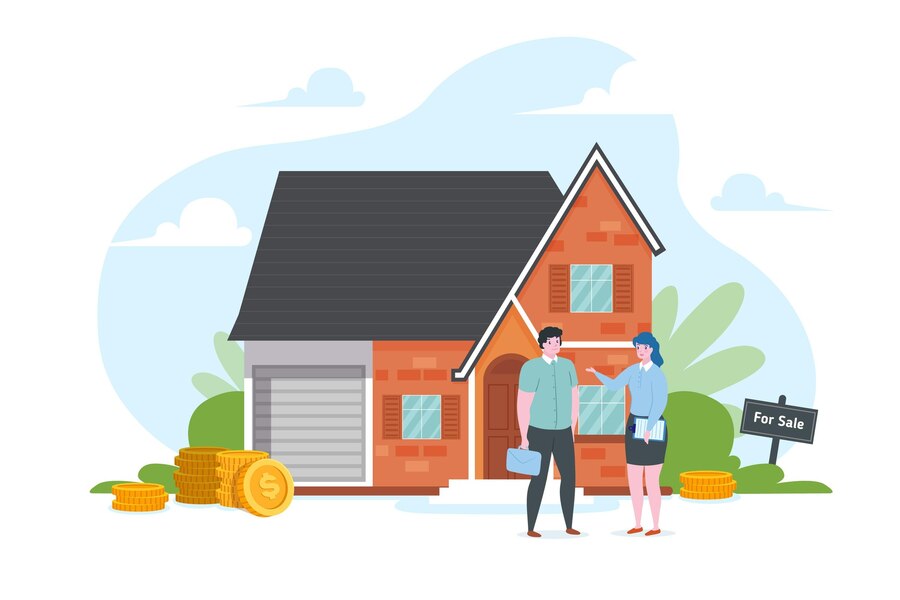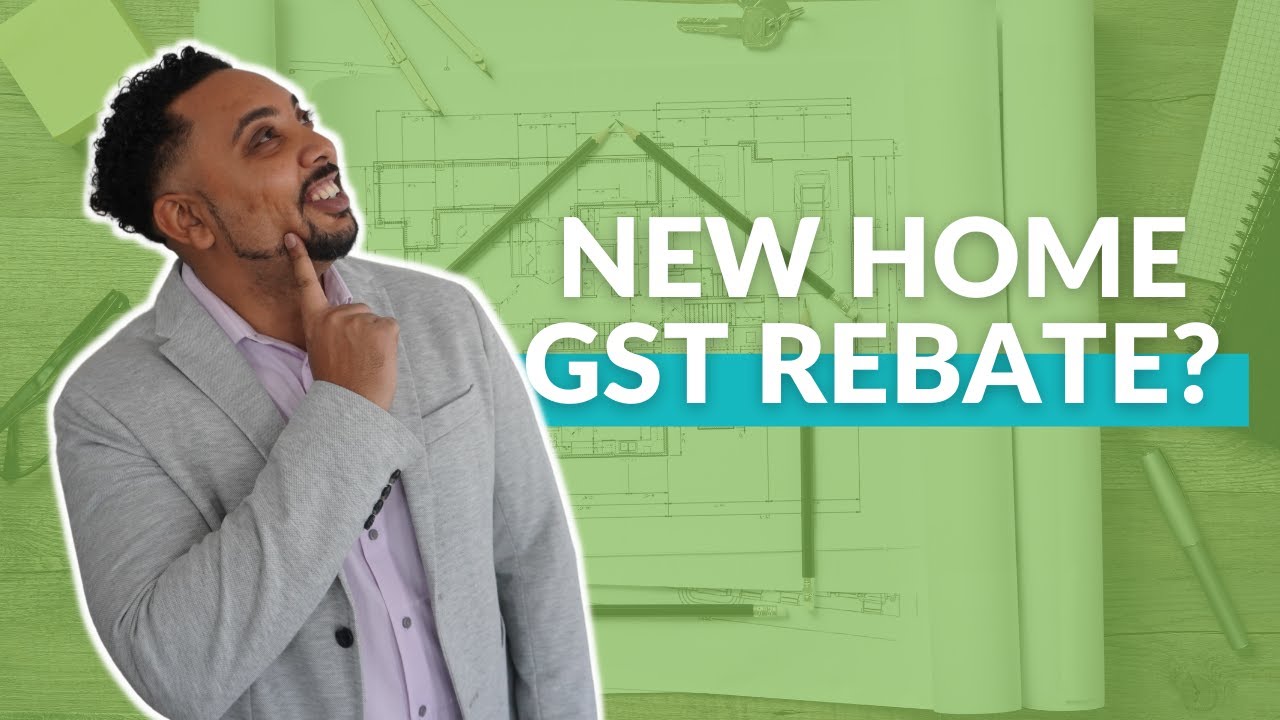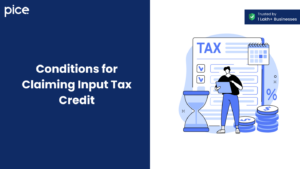What is the Eligibility Criteria for GST Rebate to Builders?
- 19 Aug 24
- 26 mins

What is the Eligibility Criteria for GST Rebate to Builders?
- Key Takeaways
- What is the GST Rebate on homes?
- How Does the GST Rebate Work?
- Calculation of the Rebate
- New GST Rates on the Construction of Residential Apartments
- Impact of the New GST Rates
- Challenges and Considerations
- GST Responsibilities
- The New Rebate Changes
- Implications for Homebuyers
- Recovery of GST on Cancelled Under-Construction Property Deals
- GST/HST Charges on Property Purchases
- When is GST/HST charged?
- How is GST calculated?
- How the rebate calculated for new housing?
- Calculation Steps
- Eligibility Conditions for the New Housing Rebate
- Claiming the GST New Housing Rebate
- Steps to Claim the GST/HST New Housing Rebate
- Issues with Builders and GST Payments
- Conclusion
Key Takeaways
- GST Rebate on Homes: Homebuyers can recover a portion of the GST paid on new or substantially renovated homes through the GST/HST New Housing Rebate.
- GST Rates for Residential Apartments: In India, the GST rate is 5% for non-affordable homes and 1% for affordable housing, aiming to make housing more affordable.
- GST and Property Tax: GST is not charged on property tax as it is a municipal levy and not subject to federal tax regulations.
- Time Limit for GST Refund: Claimants have up to two years from the date of completion or purchase closing to apply for a GST refund.
- Eligibility for GST Rebate: The GST rebate is available to those who purchase, build, or substantially renovate a home to use as their primary residence, adhering to specific price caps and conditions.
The Goods and Services Tax (GST) has significantly impacted various sectors, including real estate. Understanding how GST affects property transactions, particularly the rebate options available for homes, is crucial for buyers and investors. This guide will cover essential aspects of GST in real estate, including rebates, rates, and responsibilities.
What is the GST Rebate on homes?
The GST (Goods and Services Tax) rebate on homes is a financial incentive provided by the government to reduce the burden of GST for eligible homebuyers. This rebate is specifically designed for those purchasing new homes or condos, or for those who undertake substantial renovations on existing homes.

Here’s how it typically works
- New Homes: The GST rebate on new homes helps to offset a portion of the GST paid on the purchase price or cost of building a new home. It is available to buyers who intend to use the new home as their primary place of residence.
- Substantial Renovations: Similarly, the rebate can apply to homes that undergo major renovations. A substantial renovation is generally defined as a renovation where at least 90% of the interior of a building has been removed or replaced.
The amount of the rebate depends on the value of the home. For homes priced up to a certain threshold (which varies by region), the rebate might cover a significant portion of the GST paid. However, the rebate amount decreases as the price of the home increases and eventually phases out for higher-value properties.
To apply for the GST home rebate, homeowners must submit the appropriate forms to the tax authorities, providing proof of the GST paid and details about the property purchase or renovation. This rebate is crucial for many homeowners, as it can significantly lower the overall cost of purchasing or renovating a home.
How Does the GST Rebate Work?
The GST rebate on homes is designed to alleviate some of the financial burden associated with the Goods and Services Tax (GST) paid on the purchase of a new home, substantial renovations, or the construction of a new house. Here’s a detailed breakdown of how the GST rebate works:
Eligibility Criteria
To qualify for the GST rebate, there are several eligibility criteria that must be met:
- Primary Residence: The property must be intended as the primary place of residence for the buyer or a close relative.
- Type of Property: The rebate applies to new homes or homes undergoing substantial renovations. It can also apply to rebuilt homes destroyed by fire.
- Price Thresholds: There are price limits set on the rebate; homes above a certain purchase price may receive a reduced rebate or may not qualify at all.
Calculation of the Rebate
The rebate amount is calculated based on a sliding scale that takes into account the purchase price of the home:
- For Homes up to a Certain Price Limit: A full or partial rebate of the GST paid can be claimed.
- Above the Threshold: The rebate gradually decreases as the purchase price increases. It eventually phases out completely at a higher price point.
Application Process
To apply for the GST rebate, follow these steps:
- Completion of the Purchase or Construction: Ensure that the construction or purchase transaction is completed and that you have possession of the home.
- Documentation: Collect all necessary documents, including invoices, agreements, and proof of payment for the GST.
- Form Submission: Complete the necessary GST/HST rebate application forms. These forms vary depending on whether the property is a new build, a substantial renovation, or if other specific conditions apply.
- Submit to Revenue Agency: The completed forms, along with all required documentation, must be submitted to the appropriate revenue agency, such as the Canada Revenue Agency (CRA) in Canada.
Timing of the Rebate
- New Builds: Typically, the builder will apply for the GST rebate on behalf of the purchaser and credit the amount at the time of sale, reducing the amount of GST the purchaser needs to pay upfront.
- Self-Built Houses: For self-constructed homes, the rebate application should be submitted after the construction is substantially completed.
- Substantial Renovations: For renovations, the rebate should be claimed after the renovations are completed.
Special Considerations
- Lease of Land: If the home is on leased land, different rules might apply, depending on the terms of the lease and the intended use of the property.
- Investment Properties: Typically, the GST rebate is only available for properties used as primary residences. However, there are special tax rebate programs for landlords under certain conditions.
New GST Rates on the Construction of Residential Apartments

The GST (Goods and Services Tax) rates on the construction of residential apartments in countries like India have undergone revisions to make housing more affordable and to simplify the tax structure for real estate developers and homebuyers. The revised GST rates aim to reduce the cost of homes and encourage buyers by making it financially easier to acquire property.
Overview of Revised GST Rates
The government has restructured GST rates for the construction of residential housing project to cater to different segments of the housing market:
- Affordable Housing: For affordable housing projects, the GST rate has been significantly reduced. The definition of affordable housing can vary, but it typically includes homes with a capped area and a price ceiling which differs from region to region. For instance, as of the latest revisions, the GST rate on affordable housing has been lowered to 1% without input tax credit (ITC).
- Non-Affordable Housing: For non-affordable or luxury apartments, the GST rate has been reduced from the previous higher rates to 5% without the benefit of input tax credit. This reduction aims to lessen the financial burden on buyers of more expensive homes and stimulate demand in this segment.
In March 2019, the GST Council cut the tax rates to 5% from 12% on residential properties and 1% from 8% for the affordable housing segment.
Impact of the New GST Rates
- Reduced Cost for Homebuyers: By lowering the GST rates, the overall cost to the homebuyer is reduced, making it more affordable for individuals to purchase new homes.
- No Input Tax Credit (ITC): The removal of the ITC might initially seem like a disadvantage. However, it simplifies the tax process and eliminates the need for buyers to deal with the complexities of tax credits, which could often be opaque and lead to litigation.
- Boost to Real Estate Sector: Lower GST rates are intended to boost the real estate sector by increasing demand for new homes. This is particularly important in times when the sector may be experiencing sluggish growth.
- Transparency and Reduced Cash Flow Issues: With a flat GST rate and no ITC, the billing process becomes simpler and more transparent. Developers can manage their cash flow better without having to account for credit on inputs, which could often get delayed or stuck.
Challenges and Considerations
- Increased Costs for Developers: While the removal of ITC benefits buyers in terms of reduced complexity and possibly lower prices, developers might face higher costs as they cannot claim credit for GST paid on inputs like raw materials. This might lead to higher operational costs, which could, in some cases, be passed on to the buyers.
- Implementation and Compliance: Ensuring that the benefits of lower GST rates are passed on to the consumers as intended requires effective implementation and compliance monitoring. Governments may need to keep a watchful eye on real estate transactions to ensure that developers comply with the new tax structure and pricing guidelines.
GST Responsibilities
In the real estate sector, the responsibilities associated with the Goods and Services Tax (GST) are clearly delineated, impacting both builders and buyers. Understanding these responsibilities is crucial for compliance and to ensure fairness in the pricing of residential properties.
Who Pays GST: Builder or Buyer?
Primarily, the responsibility for paying GST falls on the builder or developer of the residential project. The GST is applied to the sale of newly constructed properties or substantially renovated homes and is usually included in the purchase price of the home.
Although the builder is responsible for remitting the GST to the government, the financial burden is typically passed on to the buyer within the total price of the property.
Can a Builder Collect GST from Customers?
Yes, builders are permitted and, in fact, expected to collect GST from their customers. This amount must be clearly stated in the property sale agreements and invoices. Once collected, builders are responsible for remitting this tax to the government within a specified timeframe. Failure to comply with these requirements can result in legal and financial penalties for the builder.
Obligations for Builders to Pass on GST Benefits
With the revision of GST rates, particularly in contexts where the rates are reduced to make housing more affordable or stimulate the real estate market, builders are legally obligated to pass these benefits on to the buyers.
This means that if a builder benefits from lower GST rates on construction inputs or services, the savings should be reflected in the pricing of the apartments or homes being sold. This obligation is part of broader efforts to ensure transparency and fairness in real estate pricing, preventing builders from unjustly profiting from tax reductions intended to benefit consumers.
The New Rebate Changes
The Goods and Services Tax (GST) rebate for homes has undergone several changes intended to make housing more affordable and to streamline the process of claiming rebates. These updates are particularly focused on new home buyers and those undergoing substantial renovations.
Key Features of the New Rebate Changes
- Increased Rebate Limits: One of the most significant changes is the increase in the maximum rebate limits. This adjustment aims to make the rebates more reflective of the current real estate prices, thereby helping more buyers to qualify for substantial relief on the GST paid on new homes or substantial renovations.
- Expansion of Eligible Properties: The changes have also broadened the scope of properties eligible for the rebate. Previously, the rebate was primarily available for purchasers of new or substantially renovated houses that are used as the primary places of residence. The new rules expand this to include more types of residential units, such as modular homes and floating homes, as well as properties purchased from builders or developers.
- Simplified Application Process: The application process for claiming the GST rebate has been streamlined. The changes include more straightforward forms and reduced documentation requirements. This simplification is designed to encourage more homeowners to apply for the rebate and to reduce the administrative burden associated with the application process.
- Clarification of Definitions and Terms: The changes include clearer definitions and terms to reduce confusion about what qualifies as a substantial renovation, the primary place of residence, and other key criteria that determine eligibility for the rebate. This clarity helps homeowners understand whether they qualify for the rebate.
- Adjustments to the Rebate Formula: The formula used to calculate the amount of the GST rebate has been adjusted. This revision aims to provide a fairer calculation that more accurately reflects the portion of GST that homeowners should be credited, considering the price and type of property.
Implications for Homebuyers

These changes in the GST rebate structure are designed to provide more significant financial relief to homebuyers, making it easier and more enticing to invest in new homes or undertake large-scale renovations. By increasing the rebate limits and simplifying the application process, the government hopes to stimulate the real estate market and provide economic relief to individuals and families looking to purchase homes.
Enhanced GST Rental Rebate Details
The enhanced GST rental rebate is a modification aimed at providing greater financial relief to tenants and landlords in the rental housing market. This change reflects an effort to make renting more affordable and support the housing sector.
Key Features of the Enhanced GST Rental Rebate
- Increased Rebate Amounts: The enhanced rebate offers increased rebate amounts to renters, which helps to mitigate the impact of GST paid on rental costs.
- Broader Eligibility: The criteria for eligibility have been broadened to include a wider range of rental properties and tenant situations, making the rebate more accessible to a larger number of renters.
- Simplified Application Process: The process for applying for the rental rebate has been streamlined, with fewer documentation requirements and a more straightforward application form.
Benefits to Tenants
These enhancements are designed to lower the overall cost of renting by reducing the effective tax burden on tenants. This not only makes housing more affordable but also encourages greater mobility and flexibility in the housing market.
Recovery of GST on Cancelled Under-Construction Property Deals
In the event of the cancellation of an under-construction property deal, buyers are often concerned about the recovery of GST paid during the transaction. Recent guidelines provide clarity and a method for reclaiming this GST, addressing a crucial concern for investors and homebuyers in the real estate market.
Key Points on GST Recovery
- Eligibility for Refund: Buyers who have paid GST on a property whose purchase was later cancelled are eligible to apply for a refund. This includes GST paid on initial deposits or installment payments.
- Application Process: To recover the GST, the buyer must submit a formal request to the developer, who then has the responsibility to refund the GST to the buyer or facilitate the refund process with the tax authorities.
- Documentation Required: The buyer needs to provide proper documentation, including proof of payment and cancellation, to support their claim for a GST refund.
- Time Frame for Refund: The process for refunding GST may vary, but it generally follows a stipulated time frame, ensuring that buyers are not financially disadvantaged for long after the cancellation.
Qualifying for the GST New Home Rebate
The GST New Home Rebate is a financial benefit offered to individuals who purchase new homes or undertake substantial renovations, making the overall cost of home ownership more manageable. Knowing the eligibility criteria is crucial for homeowners to successfully claim this rebate.
Eligibility Criteria
- Type of Property: The rebate applies to new or substantially renovated homes. This includes newly constructed homes, major renovations where most of the existing structure is replaced, and homes rebuilt after a disaster.
- Primary Residence: The property must be intended as the primary place of residence for the buyer or a family member. Investment properties typically do not qualify unless they meet specific conditions.
- Price Cap: There might be a maximum price limit beyond which the rebate decreases or is unavailable. This cap varies by region and is periodically adjusted to reflect current market conditions.
- Time Frame: There is usually a time frame within which the home must be inhabited after purchase or construction. This condition ensures that the rebate is targeted towards genuine homeowners rather than speculators.
Steps to Apply
- Document Collection: Gather all necessary documentation, such as purchase agreements, proof of payment for the GST, and evidence that the home is intended as a primary residence.
- Form Submission: Complete the appropriate GST/HST New Housing Rebate form. Different forms may apply depending on whether the property is self-constructed, purchased from a builder, or substantially renovated.
- Submission to Tax Authority: Submit the completed forms along with the required documentation to the tax authority, either through mail or, in some cases, online submission might be available.
Key Considerations
- Builder Involvement: Often, builders will apply for the GST rebate on behalf of the homeowner and credit it at the time of sale. In such cases, the buyer receives the benefit directly through a reduced purchase price.
- Audit and Compliance: Applicants should be prepared for possible audits by tax authorities. Keeping thorough records and adhering to the guidelines is essential to ensuring compliance and facilitating the rebate process.
GST/HST Charges on Property Purchases
In regions where Goods and Services Tax (GST) and Harmonized Sales Tax (HST) are applicable, understanding how these taxes impact property purchases is crucial for buyers. GST/HST is a value-added tax levied on the sale of new homes and substantially renovated properties, and its application can significantly affect the total cost of purchasing property.

When is GST/HST charged?
- New Homes: GST/HST is typically charged on the purchase of all new residential homes. This includes brand-new constructions directly from a builder or developer.
- Substantially Renovated Homes: Homes that have undergone substantial renovations, generally defined as major changes where most of the existing structure is replaced or significantly altered, are also subject to GST/HST.
- Converted Properties: Properties that were originally non-residential but have been converted into residential properties may attract GST/HST on their sale.
How is GST calculated?
- Percentage Rate: GST/HST is calculated as a percentage of the selling price of the property. The rate varies depending on the province. For instance, in provinces where HST is applied, it combines both federal and provincial sales taxes into one rate, which can range from 13% to 15%. In provinces applying only GST, the rate is typically 5%.
- Rebates and Adjustments: There are rebates available, such as the GST/HST New Housing Rebate, which can offset part of the GST payable by the buyer. These rebates have eligibility criteria based on the price of the home and its intended use as a primary residence.
Factors Affecting GST Charges
- Builder or Resale: GST is generally not applicable on resale homes unless they have been substantially renovated. It is primarily charged on properties bought from builders or developers.
- Leasehold Interests: Purchasing a leasehold interest in a residential complex can also be subject to GST/HST, depending on the terms of the lease and the nature of the property.
- Assignment Sales: In some cases, buying an assignment (where a buyer takes over the rights to purchase a property from the original buyer before construction is completed) may involve GST/HST charges.
Key Points for Buyers
- Check Eligibility for Rebates: Buyers should assess their eligibility for GST/HST rebates early in the purchase process and factor these into their overall budget.
- Consult Professionals: It's advisable to consult with tax professionals or legal advisors to accurately calculate the GST payable and understand any potential rebates.
- Budgeting: Including GST in the budgeting process is essential to avoid surprises and ensure financial readiness for the final purchase price.
How the rebate calculated for new housing?
The GST/HST New Housing Rebate is calculated based on a percentage of the GST or the federal portion of the HST paid on the purchase price of a new or substantially renovated house that is intended to be the primary place of residence.
Example Calculation of GST Rebate on New Housing in India
- Scenario
- A buyer purchases a new residential apartment for ₹60,00,000 (sixty lakhs).
- The applicable GST rate for residential real estate (under the affordable segment as defined by the GST council) is 1% without input tax credit (ITC).
- For non-affordable housing, the GST rate is 5% without ITC.
Calculation Steps
Determine the GST Rate
Assuming this apartment is classified under the 'affordable housing' category, the GST rate would be 1%.
GST Paid = 1% of ₹60,00,000 = ₹60,000
Calculate the Rebate
- The GST rebate typically applies if specific conditions are met, such as the buyer's income level, the price of the property, or the property being the buyer's first home.
- Assuming there is a rebate scheme that allows for a 50% rebate on the GST paid for qualifying first-time home buyers under affordable housing.
- Rebate Amount = 50% of ₹60,000 = ₹30,000
- Detailed Example:
- Purchase Price: ₹60,00,000
- GST Paid (at 1%): ₹60,000
- Rebate Percentage: 50%
- Rebate Amount: ₹30,000
Eligibility Conditions for the New Housing Rebate
The New Housing Rebate is designed to help mitigate the financial impact of the Goods and Services Tax (GST) or the Harmonized Sales Tax (HST) for individuals buying a new or substantially renovated home, building a new house, or converting a non-residential property into a home.
This rebate is primarily available in Canada, and understanding the eligibility conditions is crucial for prospective homeowners.
- Primary Residence: The home must be intended as the primary place of residence for the purchaser or a relative. This requirement excludes properties bought as investment properties or second homes from qualifying for the rebate.
- Type of Property
- New Homes: Applies to newly constructed or substantially renovated homes purchased from a builder or vendor or self-constructed.
- Substantial Renovations: Renovations must involve a significant overhaul of the existing structure, generally to the extent of 90% or more of the interior.
- Major Additions: Projects that effectively double the size of the living space.
- Converted Properties: Buildings converted from non-residential to residential use can qualify.
- Ownership Setup
The property can be owned individually or jointly, or it can be a leasehold interest with a significant term (usually 20 years or more).
Cooperative housing corporations, where the buyer purchases shares that entitle them to inhabit and have an equity interest in the housing unit, also qualify.
- Timing: The application for the rebate must generally be filed within two years after the completion of the construction or renovation, or the closing date of the purchase.
- Price Thresholds: The rebate might be scaled or phased out for higher-priced properties. In some cases, homes above a certain value might not qualify for the full rebate or any rebate at all, to focus the financial relief on more moderately priced housing.
Documentation and Proof
- Adequate documentation is required to support the rebate claim, including invoices, contracts, and proof of residence.
- Claimants must prove that GST/HST was paid and that the residence meets all conditions stipulated for the rebate.
Additional Points to Consider
- Rebate Amounts and Limits: The actual amount of the rebate depends on the GST/HST paid on the purchase or construction cost, and there are caps and limits that may affect the final rebate amount.
- Builder or Self-Filed Rebates: In many cases, builders will handle the GST/HST and the associated rebate at the point of sale, effectively lowering the purchase price. If not, homeowners need to apply for the rebate themselves.
- Multiple Units and Rentals: If the new home includes a secondary rental unit, additional rebates might be available, but specific criteria must be met, and separate applications may be necessary.
Claiming the GST New Housing Rebate

Claiming the GST/HST New Housing Rebate involves a specific set of steps to ensure eligibility and receive the financial benefits for new or substantially renovated homes.
Here’s a brief guide on how to claim this rebate:
Steps to Claim the GST/HST New Housing Rebate
Determine Eligibility: Confirm that the home is either newly constructed, substantially renovated, or a converted non-residential property, and that it will serve as the primary place of residence.
Gather Documentation
- Collect all relevant documentation, such as contracts of purchase and sale, invoices related to construction and renovation costs, and proof of payment for GST/HST.
- Ensure documentation proves the home is intended as the primary residence.
Complete the Appropriate Forms
- Fill out the GST190, GST/HST New Housing Rebate Application for Houses Purchased from a Builder.
- For owner-built houses, use Form GST191-WS, Construction Summary Worksheet, to calculate the rebate amount.
- Each province may have additional forms if a provincial rebate is applicable.
Submit the Application
- Send the completed forms along with the required documentation to the Canada Revenue Agency (CRA) or the applicable provincial authority.
- Ensure applications are submitted within two years of the completion of construction or renovation, or the closing date of the purchase.
- Follow Up: After submitting, keep track of the application's progress and be prepared to provide additional information if the CRA requests further details or clarification.
Rebate Receipt Timeline
The timeline for receiving the GST/HST New Housing Rebate is crucial for homeowners and builders managing finances after the purchase, construction, or renovation of a property. Here's a detailed explanation of what to expect regarding the timing:
Application Submission
First, ensure that your rebate application is complete and submitted within the required timeframe:
Deadline: The rebate application must be filed within two years after the completion date of the building, substantial renovation, or the closing date of the purchase.
Processing Time
Once the application is submitted, the processing time can vary based on several factors:
- Standard Processing: Generally, it takes about two months for the Canada Revenue Agency (CRA) to process the rebate application. However, this can extend during peak times or if there are issues with the application.
- Complex Cases: If your application involves complex issues or requires additional documentation, the processing time might be longer. The CRA might contact you for more information or clarification, which can further extend the timeline.
Receipt of Rebate
After processing
Direct Deposit: If you've opted for direct deposit and your application is approved, the funds might be deposited into your bank account shortly after approval, typically within a few days.
Cheque Payment: If you're receiving a cheque, expect it to arrive by mail, which can add additional time depending on postal services.
Potential Delays
Several factors can delay the rebate process, including:
- Incomplete Applications: Missing information or documentation can significantly delay processing. Ensure that all required forms and supporting documents are complete and accurate.
- High Volume Periods: During times when many people are filing for rebates, such as after the introduction of new tax measures or at the end of the fiscal year, processing times may be longer.
- Audit or Review: If your application is selected for an audit or further review, this will extend the processing time. The CRA will inform you if your application is under review and what additional information or documentation is required.
Issues with Builders and GST Payments
When purchasing a new home, dealing with GST (Goods and Services Tax) payments can be complicated, especially when discrepancies arise concerning how builders handle these taxes. Homebuyers need to be aware of potential issues and understand their rights and the builder's obligations under the law. Here's a look at common issues and how to address them:
Common Issues Encountered
- Non-Disclosure of GST: Sometimes, builders might not clearly disclose the amount of GST included in the purchase price of a new home. This lack of transparency can lead to confusion and unexpected financial burdens on buyers.
- Incorrect GST Charges: Builders may incorrectly calculate GST, either by mistake or deliberately, which can lead to overcharging.
- Delayed or Non-Remittance of GST: A significant issue arises if builders delay or fail to remit the collected GST to the tax authorities. This non-compliance can lead to legal troubles for the builder but also potentially impact the buyer, especially in terms of rebate eligibility.
- Failure to Pass on GST Benefits: With changes in GST rates or government incentives, builders are often required to pass these benefits on to the buyers. If builders retain these benefits, they are violating tax laws and fair trade practices.
Steps to Address These Issues
- Review Purchase Agreement: Ensure that the purchase agreement clearly states the GST amount and the terms regarding its calculation and payment. Seek clarification from the builder or a legal advisor if the terms are not clear or seem ambiguous.
- Verify GST Registration: Confirm that the builder is registered to collect GST. This information should be transparent and verifiable to ensure that GST collected is legally managed.
- Seek Professional Help: If there are discrepancies in GST charges or any other financial aspects related to the builder's obligations, it's advisable to consult with a tax professional or legal advisor. They can offer guidance based on current laws and regulations.
- Report to Tax Authorities: If you believe that the builder is not properly handling the GST, you can report this to your local tax authority. In Canada, for instance, this would be the Canada Revenue Agency (CRA). They can investigate and ensure compliance.
- Legal Action: As a last resort, legal action can be taken against builders who fail to comply with GST regulations. This step should be considered if all other attempts to resolve the issues amicably have failed.
Conclusion
The GST on homes, including the rebate system, plays a pivotal role in the real estate market. By understanding these elements, buyers can make informed decisions and potentially save significant amounts during their property transactions.
💡Get started with PICE today and streamline your GST payments. Click here to sign up and take the first step towards hassle-free GST management.

















